Who should replace Steven Gerrard for England?
If the captain steps aside after England’s World Cup 2014 humiliation, who should get his place?
As England pack their smalls into suitcases and prepare for the flight home, they may have a rather larger adjustment coming. After 14 years and 114 caps, Steven Gerrard may decide to retire from international football.
You couldn’t blame him for doing so. Never a man to take responsibility lightly, Gerrard has keenly felt the pain of leading England in two successive disappointing tournaments — and at 34, the physical demands of international football could threaten attempts to prolong his career for his beloved Liverpool.
At the same time, there is a strong body of opinion that England’s recent rejuvenation must continue. As ever, some of that is of the baby-with-bathwater variety, but along with Frank Lampard (who at 36 will surely also call it a day for England), Gerrard is now the sole survivor of the millennial “Golden Generation” whose promise never really delivered on the international stage.
But if and when Gerrard hangs up his armband and Three Lions shirt, who could step into the breach? Roy Hodgson has a number of options, but most are as yet an unknown quantity — or quality, at this level. Read on for FourFourTwo’s assessment of their individual merits…
Jack Wilshere (Arsenal)
Jack Wilshere has been England’s coming man for half a decade; it’s about time he arrived. Paul Scholes may have been atypically garrulous on his betting-column soapbox when saying Wilshere “does not look any better now than when he was 17”, but there’s a kernel of truth there, as the Arsenal man acknowledged after a subsequent phone call with the Manchester United legend.
Arsene Wenger says the 22-year-old has “Spanish technique, but an English heart”, and that aesthetic/athletic combination perfectly suits Hodgson’s new breed of young lions: astute players like Raheem Sterling, Daniel Sturridge, Danny Welbeck, Theo Walcott and Ross Barkley.
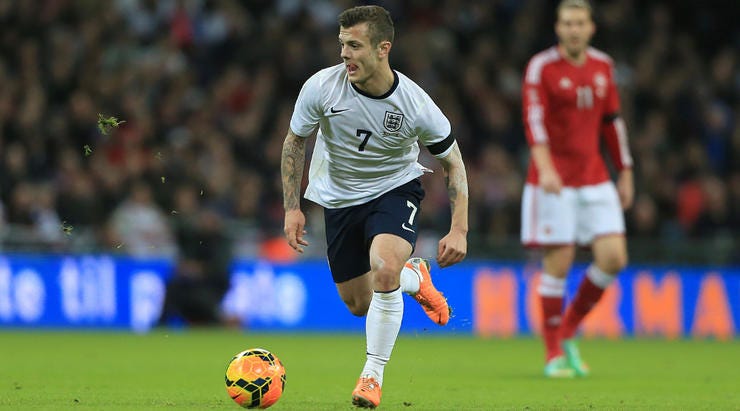
Wilshere also shares their positional flexibility: although perfectly capable of playing at №10, he has more recently been playing in a deeper role for Arsenal, while being given licence to rampage forward, often to memorable effect. Wenger has described him as “a box-to-box player, more than just a holding midfielder,” while Gary Neville has noted that “like Scholes, he dominates possession and keeps things moving.”
The main worry with Wilshere, bar a niggle over his temperament, is the thing which has most hampered his development: his injury record. It’s six years since he became the Gunners’ youngest-ever league debutant and four years since his first England call-up in August 2010; from that point, Wilshere has only been in 24 of England’s 47 squads, and that’s not due to lack of ability.
Alex Oxlade-Chamberlain (Arsenal)
One man’s misfortune is another man’s opportunity, and Wilshere’s absence from Arsenal duty during 2014 gave more gametime to Alex Oxlade-Chamberlain in central midfield. Although the 20-year-old came to prominence as a nippy winger, his club manager sees his future slap-bang in the middle of operations.
“His future will be there in central midfield, in a deeper role, because he has a good long ball and penetration from deep,” said Wenger in January. “He has good quality to distribute and penetrate individually — very similar to Steven Gerrard.”
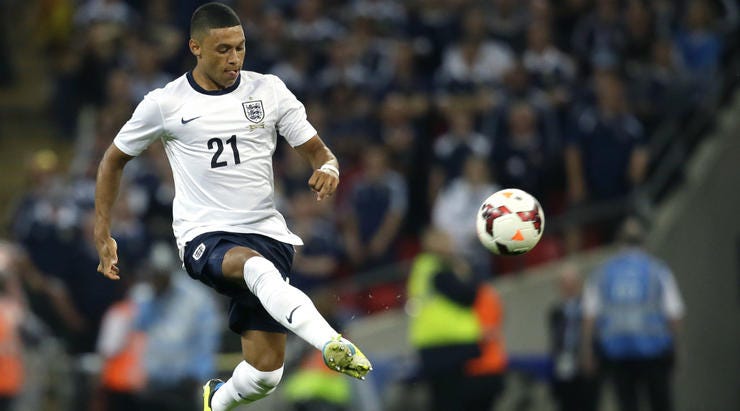
‘The Ox’ certainly caught the eye in that role this spring, combining energetic bursts forward with increasing tactical awareness — knowing when to simply stand still, the better to block an opponent. The defensive side of the game is something that will require more work, and one could argue that Arsenal may not be the best place to get that training, but Oxlade-Chamberlain has the attributes to succeed.
Not far shy of 6ft tall and robust enough to have seriously considered a career as a rugby scrum-half (he took trials at London Irish), the Ox is hardly a greenhorn after two years in the squad. Hodgson and Wenger both have high hopes for him; it will be interesting to see how much faith they show in the coming seasons.
Michael Carrick (Manchester United)
Two years ago, the Manchester United midfielder most likely to have an England future was Tom Cleverley — but despite being named in every England squad since Euro 2012, he currently has enough trouble proving his worth at club level. Turning 25 this August and with a fearsome new manager to impress, Cleverley may find that being on standby for Brazil 2014 is not just an accurate assessment of his current worth but a harbinger of his international future.
Michael Carrick has his own history with being on standby; after a polite word with the FA, he wasn’t listed as a reserve for Euro 2012. However, Hodgson named him in the first post-tournament squad for the Italy friendly, and the Geordie ended up with the armband for the last 20 minutes; since then he has been in every squad bar one, quietly accepting his place on the standby list for 2014.
It may seem absurd to suggest someone only 14 months younger than Gerrard as a replacement, but the Manchester United man is an entirely different beast to the (presumably) outgoing captain. Whereas Gerrard has had to adapt his game to cope with decreasing athleticism, Carrick was always one to glide rather than strive, and has been United’s regista for eight years. More subtly, perhaps, he is less of an obvious link to England’s past underachievements: for all his medals he has never been a gilded icon, with all the subsequent potential for disappointment.
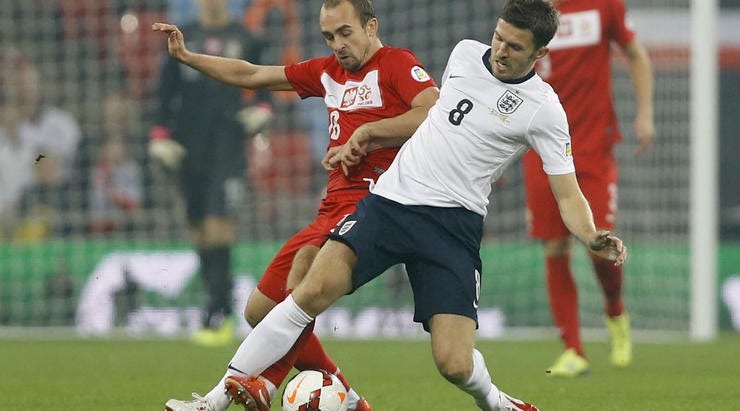
Carrick’s metronomic passing prowess has never been doubted. Even last season, United’s worst and Liverpool’s best title tilt for a generation, he averaged more passes per 90 minutes (74.48 to Gerrard’s 67.65), more successful passes (65.76 to 58.10), better pass completion (88% to 86%) and — in answer to those who claim he always takes the safe option — more forward passes (55.09 to 46.73).
The 32-year-old also possesses more ingrained defensive tactical sensibility than most of England’s other options. He averaged 2.98 interceptions per 90 minutes last season — more than twice Gerrard’s 1.46 — and was far less susceptible to defensive errors, just 0.04 per 90 minutes compared to Gerrard’s 0.16 (or one every 6.25 games, about the length of a run to the World Cup semi-finals). Nor did he make a single error leading to a goal conceded — sorry, Stevie G fans, but we had to bring it up.
With England’s first-choice centre-backs notably short on experience, it could well be that Hodgson wants or needs a calm older head in defensive midfield. He could hardly ask for someone better qualified than Carrick — and with Gerrard and Lampard out of the picture, Carrick may well be pleased to cement his own role.
James Milner (Manchester City)
What, THAT James Milner? The one who can’t hold down his preferred central role for Manchester City, or any role for England? Yes, that one. City can buy anyone they like, but England can’t — and although Hodgson has gone for electric youth down the flanks, he has long appreciated the value of a Milner around the place.
Now 28 and arguably entering his prime, the Leeds-born midfielder has long been accumulating experience. It’s more than 11 years since he scored his first Premier League goal, while he has represented England more than 100 times at various levels, including a record 46 U21 caps, a mark he recently passed for the seniors. He has been in every squad bar two (one injury, one suspension) for the last five years.
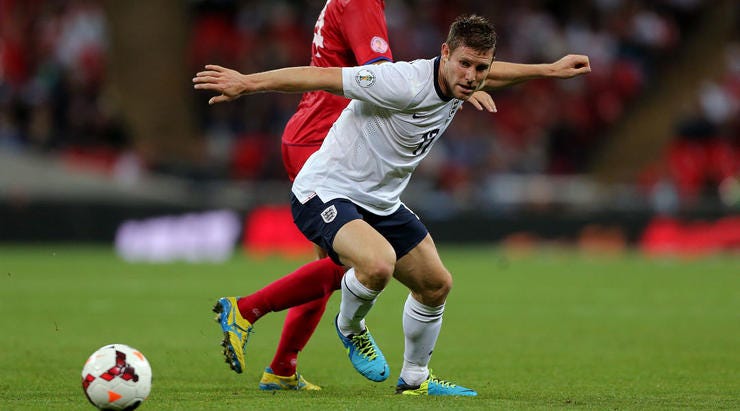
But can he cut it in central midfield? He certainly thinks so. Tactically adaptable at the top level while some of the current crop were still at primary school, Milner even slotted in at right-back during England’s preparations for Brazil 2014. An intelligent player trusted by managers, the indefatigable teetotaller could yet come in from the periphery and make the central role his own — for country, if not for club.
Tom Huddlestone (Hull City)
Flavour of several months during Hull’s successful adaptation to the Premier League, Huddlestone is arguably the Premier League’s best long-range passer; with Gerrard out of the picture, Hodgson may have another look at the 27-year-old in the games to come.
Another two-footed England Under-21 graduate, Huddlestone impressed the casual Match of the Day viewer last season with his range of passing — with either foot. But there are certainly drawbacks with the ex-Tottenham man. Hull’s usual 3–5–2 system means he doesn’t have to be very mobile, and some suspect that’s probably for the best.
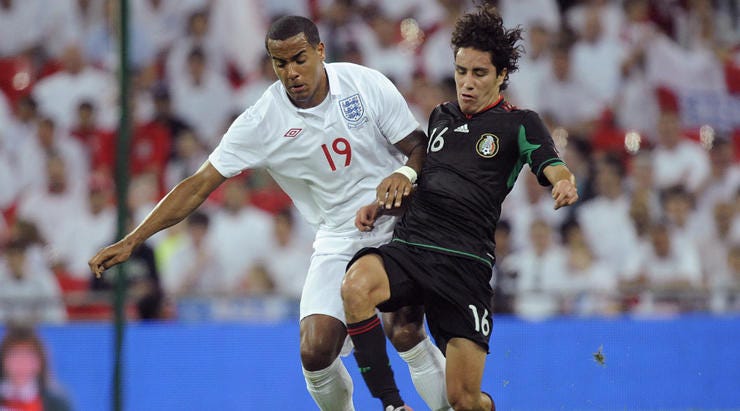
Despite getting his first senior call-up six years ago, he has yet to be trusted by either Hodgson or Fabio Capello. He was on the Italian’s 30-man longlist for South Africa but didn’t make the cut, being subbed at half-time on his only England start. His only England call-up under Hodgson didn’t go so well: in November 2012 he got the last 15 minutes in Sweden, who promptly came from 2–1 down to win 4–2, including that immortal worldy from Zlatan Ibrahimovic.
If Huddlestone continues to impress, including during Hull’s Europa League campaign, he may warrant further investigation by Hodgson. What happens after that is far less certain.
Steven Gerrard (Liverpool)
Eh? Well, it’s not definite that Gerrard will retire from England duty: he has always simply said he will make a decision after the World Cup. In the rawness after the defeat to Uruguay, he wisely opted to give himself more time to think, waiting a while so that intellect rather than emotion might aid his assessment, acknowledging that he would “need at least three weeks to clear my head… I will consider it long and hard.”
Hodgson, for all his commitment to rejuvenation, recognises Gerrard’s qualities: he had already asked him to stay on before the captain faced the press in the Uruguay aftermath. Most good teams have a blend of innocence and experience, and there is a lack of mature leadership in the England corps; of Hodgson’s 30-man longlist for Brazil, the only regular club captains were Gerrard, Adam Lallana and Phil Jagielka, who at almost 32 might find his own England place under long-term threat.
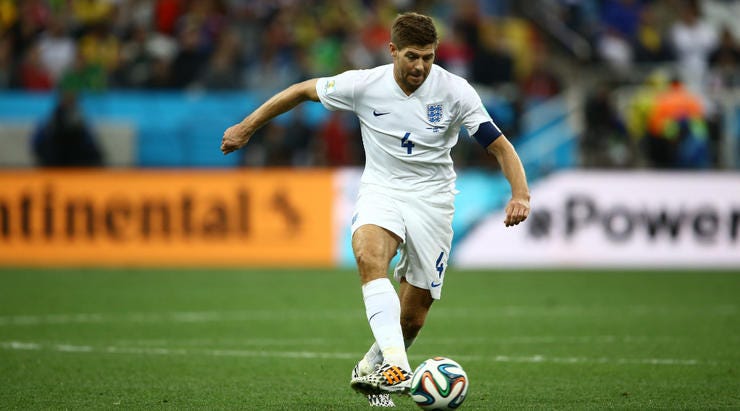
So England still want Gerrard, and they arguably still need him — not just as a captain but as a particular kind of player: still athletic, always a leader, with excellent ball distribution (his set-pieces would be particularly missed). Does Gerrard still want England? It may depend on whether he’s too much of a romantic fool to bow out with a tournament like this; after the sickening ending to his club season, he may not be able to walk away from his country on such an anticlimax.
Originally published at www.fourfourtwo.com on June 25, 2014.
Post-script: Gerrard did indeed quit international football, announcing his retirement on 21 July. England swept to Euro 2016, winning all 10 qualifiers with a goal difference of 31 to 3. For the first half of the qualifying campaign Hodgson’s midfield was anchored by Jack Wilshere, until the Arsenal man’s inevitable injury.





